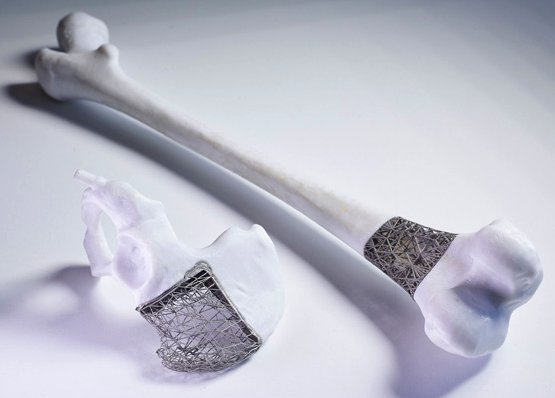
An Australian research project is to combine 3D printing, robotic surgery and advanced manufacturing to advance tumour surgery with tailored implants for bone cancer patients.
The project brings together the Australian Government, RMIT University, the University of Technology Sydney (UTS), St Vincent’s Hospital Melbourne and Stryker, the global medical technology company. Stryker will put forward most of the $12.1 million it will take to carry out the research, with the Innovative Manufacturing Cooperative Research Centre contributing $2.36m.
‘Just in time implants’, the name of the project, will see the partners aim to transform the development and delivery of implants to musculoskeletal tumour patients. They will combine specialised imaging with 3D printing techniques, which allow customised implants with multi-density cross-sections and surfaces to be manufactured, to precisely resection the tumour. The partners say this will enable them to maximise the retention of the patients’ own bone and soft tissue, and ultimately reduce their time spent in hospital.
The research has been born from doctors finding the traditional way of manufacturing patient-specific implants highly manual and very time-consuming. Moreover, they are often unable to cope with anatomical changes that occur on the day of surgery, rendered them redundant and unusable.
Embarking on the five-year-long research project, the partners are hopeful and confident in equal measure that their work will benefit a host of cancer patients, and encourage medical professionals to integrate advanced technologies into their surgery set-ups.
“By combining specialised imaging techniques, 3D printing and the accuracy of robotic assisted surgery, we are aiming to deliver a personalised implant in time for the surgeon to remove the cancer and repair the patient’s bone in the one operation,” said St Vincent’s Hospital’s Professor Peter Choong. “This process will expand the surgical options available to patients and surgeons and increase the potential for limb saving surgery.”
“Our aim is to bring the technology to the theatre,” RMIT’s Professor Milan Brandt added. “While patients are having their cancer removed in the operating theatre, in the next room, we are custom printing an implant to precisely fill the space left after removal of the diseased bone.”
Bagikan Berita Ini














0 Response to "Australian research project aims to transform manufacture of patient-specific implants with 3D printing"
Post a Comment